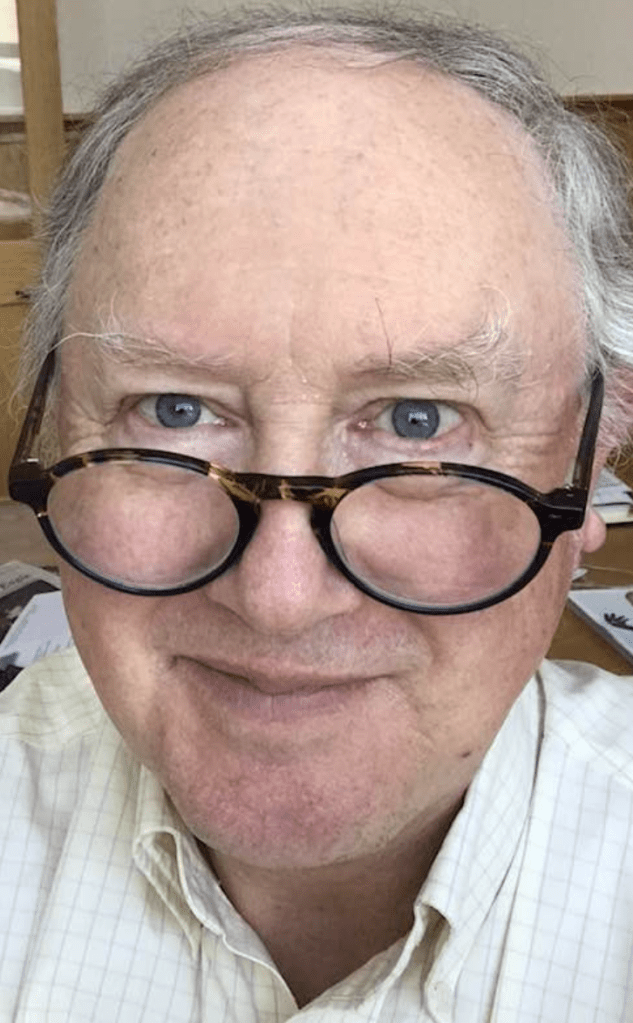Editor’s Notebook: Help decipher the American Revolution
Published 12:15 am Saturday, February 1, 2025

- Matt Winters Matt Winters
To engage citizen volunteers and make the American story more accessible, the National Archives is enlisting everyone it can in transcribing vast Revolutionary War pension files. (This also caught the attention of Elleda Wilson, author of The Astorian’s popular “In One Ear” column: tinyurl.com/Ear-Cursive.)
Like Ice Age mammoths and mastodons that aimlessly wandered around until finally dying out around 4,000 years ago, cursive handwriting is on a crumbling glacier’s edge of extinction. There are a few holdouts who suggest cursive confers some obscure benefit for brain training, but this is unlikely to generate enthusiasm for pencils, pens and paper in our era of universal computers.
Like Ice Age mammoths and mastodons that aimlessly wandered around until finally dying out around 4,000 years ago, cursive handwriting is on a crumbling glacier’s edge of extinction.
Even powerful computers struggle to decipher handwriting — though artificial intelligence may be able to breeze through it in a few more years. For now, humans who learned cursive in long-ago classrooms are still its best code breakers.
Handwriting was a vital skill. Even after typewriters became widely adopted by businesses in the U.S. by the late 1880s, being able to write well — both legibly and grammatically — was a sign of education and a signal of class status. Old letters, contracts and postcards not only convey tangible content — “Having a great time, glad you’re not here” — but also reveal clues about the writer. Great-grandma Winters’ loving notes to her oldest son, my grandfather living in Bellingham, suggest she didn’t make it far beyond third grade.
The Palmer Method of teaching cursive was obsolete by the time I was in grade school, but so were lots of other things in our remote mountain classrooms. Being up to date wasn’t any kind of priority. One example: In the mid-1960s, friends and I at Wyoming Indian Elementary School were singing Civil War campfire songs from ratty books with crumbling pages:
Peas, peas, peas, peas
Eating goober peas
Goodness, how delicious,
Eating goober peas.
The Palmer Method consisted, among other things, of hours practicing circular loops over and over and over across lined paper — the grade school equivalent of pounding rocks into gravel in a prison quarry. In theory this conferred muscle memory, training hands how to form the artistically flowing lines of beautiful handwriting. In reality, some of us imagined escaping by jumping off nearby cliffs like Butch Cassidy and the Sundance Kid.
When perfected, handwriting is beautiful and remains fairly quick to make out with a little practice. My mother’s penmanship caressed the page. But even in its golden era, many were no better at it than I was — it wasn’t just some doctors and lawyers who were negligent or even deliberately sloppy. For years I’ve belonged to an informal online group that figures out names and words in old parish registers from one of my family’s home counties in northern England. Some are confounding puzzles; as with the Navajo code talkers in World War II, you can more or less tell something’s a word, without having any clear idea what it means.
“The past is a foreign country; they do things differently there,” novelist L.P. Hartley observed, and that’s part of the problem when transcribing old writings: Our frames of reference shift over time as objects and jobs become obsolete, and as language and culture evolve. It’s not just figuring out whether letters add up to a word, but figuring out whether the resulting jumble is even something we can still connect with.
Massive as it is, the Revolutionary War transcription project (tinyurl.com/Revolution-project) has the advantage of involving just 231,000 troops in the Continental Army, about 2 million fewer than in the Civil War. I suppose it will be a long time before Civil War pension files are translated into searchable, understandable text.
In the meantime, you can order paper or electronic copies of files pertaining to ancestors from the National Archives. They bring ancestors a little back to life. My wife’s and my five Union soldiers endured horrendous misery and awe-inspiring adventures. We’re so grateful to the National Archives for safeguarding these glimpses of precious past lives.
If you don’t watch “Finding Your Roots” on PBS, you should. Its experts comb through archival records to help celebrities understand their families’ past. But with diligence, anybody can journey through time. Thanks to volunteer transcribers — you can become one today — more and more of us can delve into nearly forgotten lives and revive important stories for ourselves, our kids and grandkids.
In this time of roughshod budget cutting, PBS and the National Archives face threats likely to undermine popular and meaningful work. They deserve our ongoing support.
Matt Winters is the regional editor for The Astorian, the Seaside Signal and the Chinook Observer.





